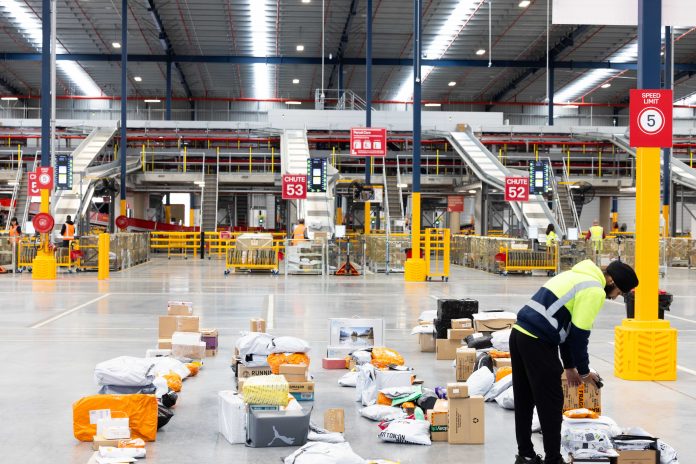Australia Post released its 2024 Inside Australian Online Shopping Report, providing exclusive insight into which Aussies spent the most online in the past year.[1]
According to the data, 9.5 million Australian households[2] shopped online in 2023, spending $63.6 billion on online goods[3], down 1.2% from the year prior. Online shopping has remained largely flat with less spent online compared to last year, but the number of online purchases increased as Aussies turned to smaller, more frequent buys.
Cost-of-living pressures driving more cautious spending in 2023 has also highlighted a clear generational gap in spending habits. Gen Y (millennials) spent more than any other generation ($22.1 billion) despite their average basket size declining by –2% YoY ($95). Gen X followed suit, spending $17.47 billion online while their average basket size declined by 5% YoY to $110 and Gen Z spent the least ($10.64 billion), choosing more budget-friendly purchases with $80 as the average basket size. Bucking this trend was Baby Boomers who spent 7% more than the prior year ($109 average basket size).
Social researcher and generational expert Claire Madden says: “We’re seeing a growing confidence in older generations spending more than younger generations in each transaction. While Gen Z don’t currently have the same earning capacity as older generations, they are showing they are still active, savvy, online shoppers who have a focus on lifestyle spend and search for good value.”
Aussies spent the most on home and garden ($16 billion), a category which traditionally has more expensive items like furniture. The two categories that showed growth were variety stores ($15.8 billion, with YoY growth of 9.1%) and food and liquor ($13.2 billion, with YoY growth of 2.4%), showing consumers aren’t afraid to shop around for a better deal as cost-of-living pressures continue to take effect.
Interesting comparisons can also be made state versus state. Across the country, West Australians embraced the online shopping trend with the strongest YoY growth in number of online purchases of the states/territories (5.1%), followed closely by the NT (4.6%) and Queensland and Tasmania (4.3% each). The significant 18% increase in online shopping activity since 2019 in remote and regional Australia can be attributed to population growth post Covid-19[4] and convenience, while Victoria and NSW saw a drop in online purchases, with both states returning to normal shopping habits since the pandemic.
Australia Post Executive General Manager Parcel, Post and eCommerce services Gary Starr says e-commerce has now established itself as the new normal in Australian retail and is an integral part of the overall retail experience.
“Australians are shopping online more often, with one in seven households shopping weekly. While basket sizes were smaller this year, the increasing trend in repeat shopping highlights the reliance on eCommerce in everyday life. 9.5 million households received a parcel in 2023, that’s eight in 10 households making an online purchase and over 1.5 million more Aussies shopping online compared to 2019.
“This year, online sales events accelerated in popularity, almost becoming traditions for Aussie shoppers. The Black Friday sales event alone saw an 88% jump in online purchases, compared to 2019 and retailers were quick to capitalise.
“The success of sales events like Black Friday and Cyber Monday ultimately contributed to Australia Post achieving its biggest eCommerce peak period ever, delivering nearly 100 million parcels in November and December,” Mr Starr said.
Minister for Communications, the Hon. Michelle Rowland MP says the results demonstrate the ongoing demand for postal services in Australia.
“Australia Post connects millions of consumers with national and international businesses every year, and today’s results demonstrate the significant role the organisation plays in enabling e-commerce to thrive in Australia.
“As demand for e-commerce continues to increase, so too does the need for trusted, timely and reliable access to postal services in Australia.
“The Government is committed to ensuring Australia Post keeps up with this demand, which is why we are supporting Australia Post to modernise to deliver more parcels and improve the company’s long-term financial sustainability.
“These important reforms will help ensure this cherished institution continues to deliver for consumer and small businesses, and help boost Australia’s economic productivity,” Minister Rowland said.
With a focus on the customer, Australia Post is delivering on changing consumer expectations with the introduction of Australia Post Metro, a next-day delivery service operating in Melbourne, Sydney and Brisbane. Australia Post is committed to the communities it operates in, investing $343 million in the network in the last financial year and opening new sites like Orange Community Hub—an example of more to come for a modernised Australia Post.
[1] Data is based on the analysis of 2018-2023 parcel data recorded by the Australia Post Group, unless otherwise stated.
[2] All household counts are limited to residential households and exclude households that received an excessive number of parcels per year to remove outliers from the distribution.
[3] Online Physical Goods, CommBank iQ, Jan 2024. This value includes buy now pay later (BNPL) payments.
[4] Profile of Australia’s Population, Australian Government Institute of Health and Welfare, June 2023.





